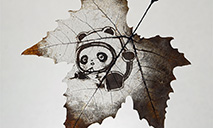People in Lhasa make last-minute purchases in run up to Tibetan New Year celebrations
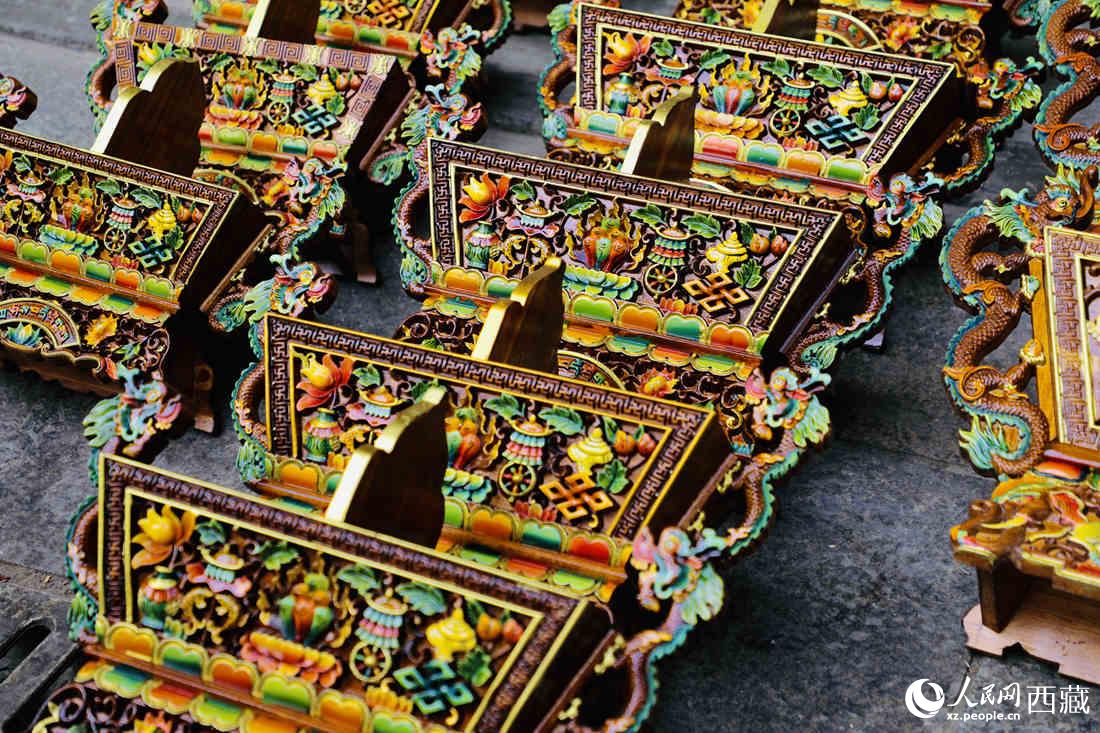
Photo shows Chemar boxes for sale at a market in Lhasa, capital of southwest China’s Tibet Autonomous Region. Chemar, a two-tier rectangular wooden box used to hold roasted wheat grains and a mixture of roasted barley flour and butter, symbolizes a long life, a harvest year, and auspiciousness. Recently, the Tibetan people have been busy buying items in preparation for the Tibetan New Year, which falls on March 3, 2022. (People’s Daily Online/Tsering Norbu)

Photo shows butter sculptures used to decorate Chemar boxes for sale at a market in Lhasa, capital of southwest China’s Tibet Autonomous Region. Butter sculptures are handmade sculptures carved with butter in the shapes of people, flowers, trees, birds and animals. Recently, Tibetan people have been making purchases of various items in preparation for the Tibetan New Year, which falls on March 3, 2022. (People’s Daily Online/Tsering Norbu)
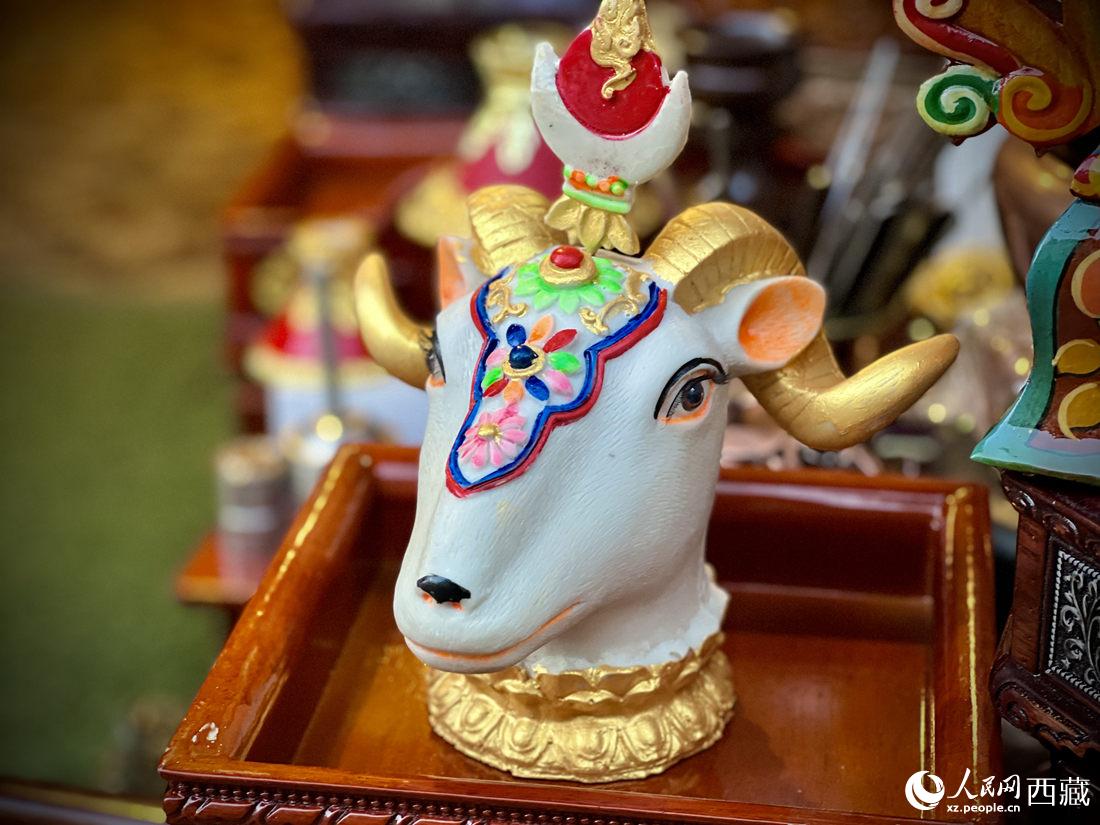
Photo shows a decorative item in the shape of a sheep head for sale at a market in Lhasa, capital of southwest China’s Tibet Autonomous Region. The Tibetan people believe that sheep are a sign of auspiciousness, so they often put this sheep head-shaped item in the middle of all their offerings to wish for prosperity in the New Year. Recently, Tibetan people have been busy shopping for items in preparation for the Tibetan New Year, which falls on March 3, 2022. (People’s Daily Online/Tsering Norbu)
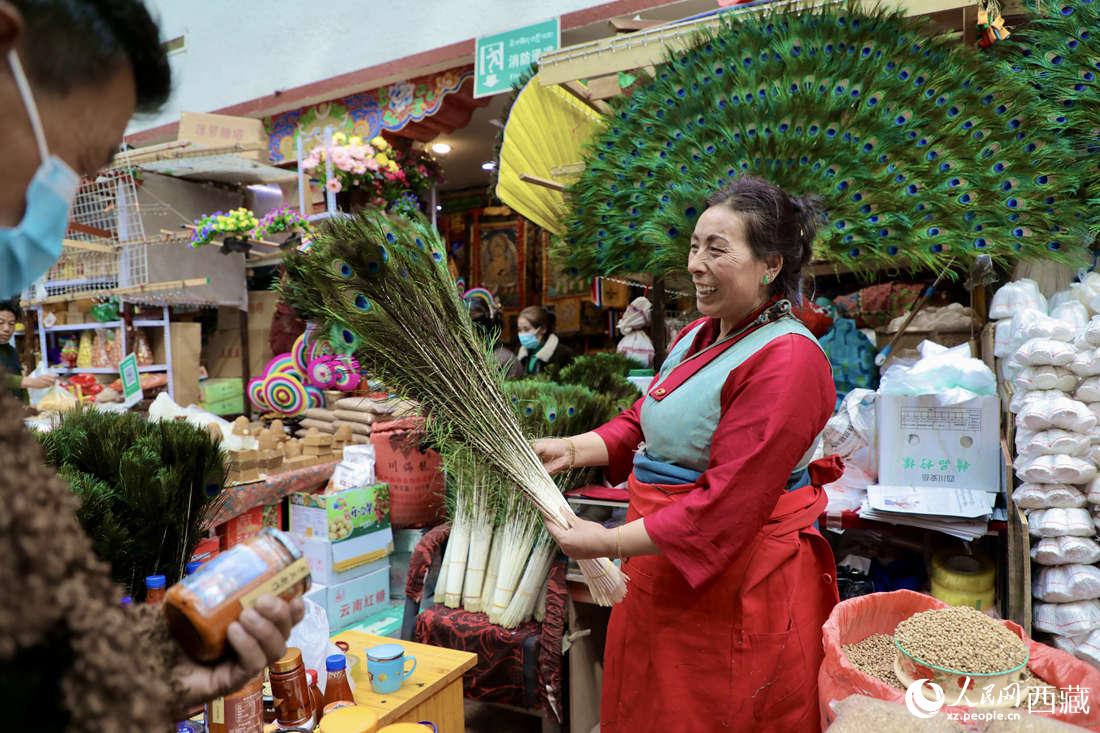
Photo shows a market in Lhasa, capital of southwest China’s Tibet Autonomous Region. Recently, Tibetan people in the city have been busy buying items in the run up to the Tibetan New Year, which falls on March 3, 2022. (People’s Daily Online/Tsering Norbu)
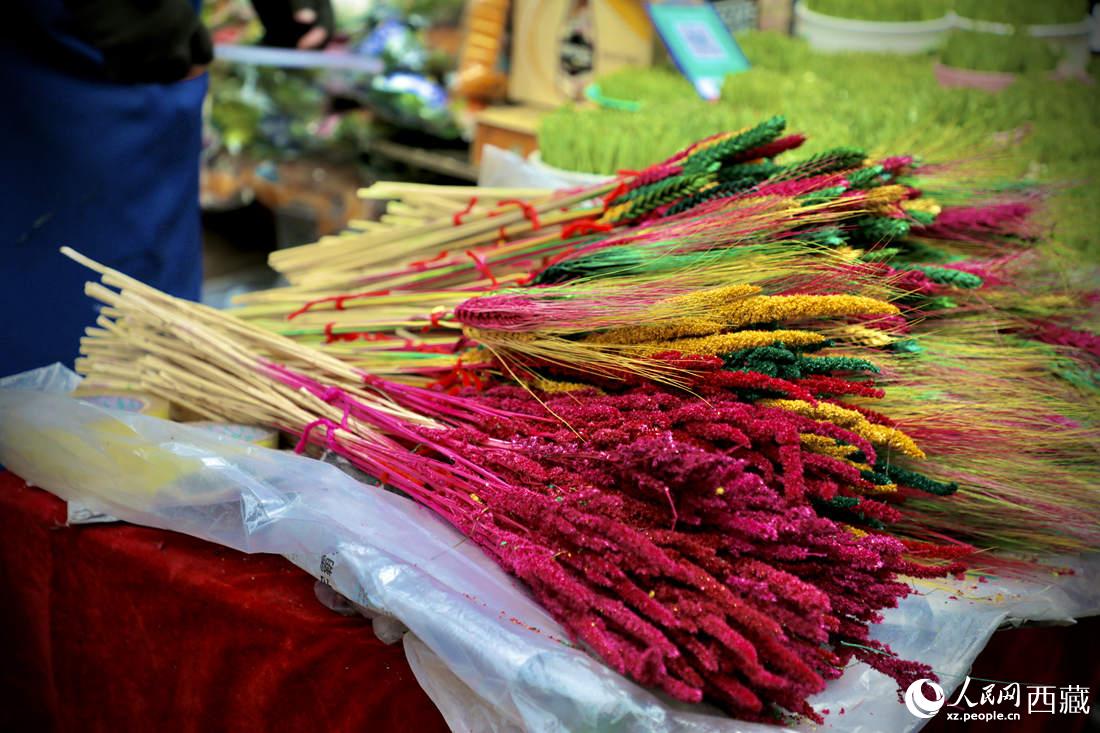
Photo shows colorful highland barley ears for sale at a market in Lhasa, capital of southwest China’s Tibet Autonomous Region. The Tibetan people use colorful highland barley ears to adorn their houses as the flowers symbolize happiness and a harvest year. Recently, Tibetan people have been making purchases of various items in preparation for the Tibetan New Year, which falls on March 3, 2022. (People’s Daily Online/Tsering Norbu)

Photo shows Tibetan-style spring couplets for sale at a market in Lhasa, capital of southwest China’s Tibet Autonomous Region. Recently, Tibetan people have been busy buying different things in the run up to the Tibetan New Year, which falls on March 3, 2022. (People’s Daily Online/Tsering Norbu)
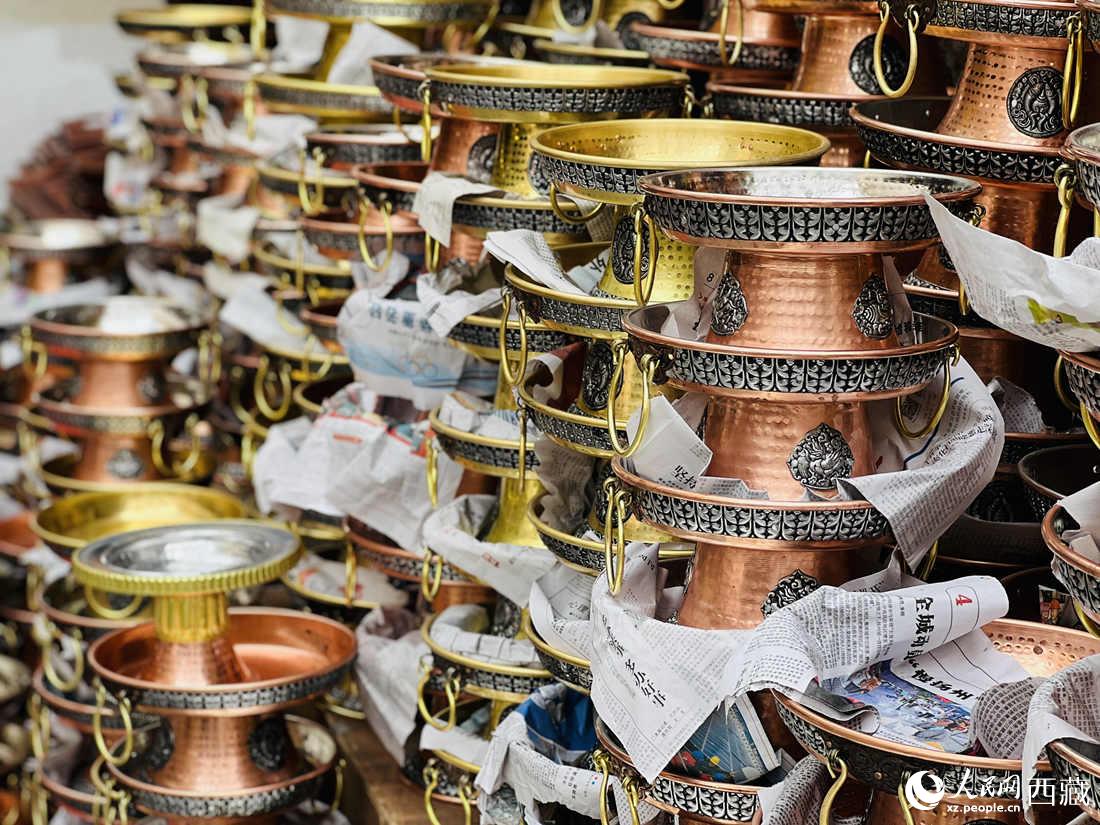
Photo shows different Tibetan-style tableware for sale at a market in Lhasa, capital of southwest China’s Tibet Autonomous Region. Recently, Tibetan people have been busy buying different things in preparation for the Tibetan New Year, which falls on March 3, 2022. (People’s Daily Online/Tsering Norbu)
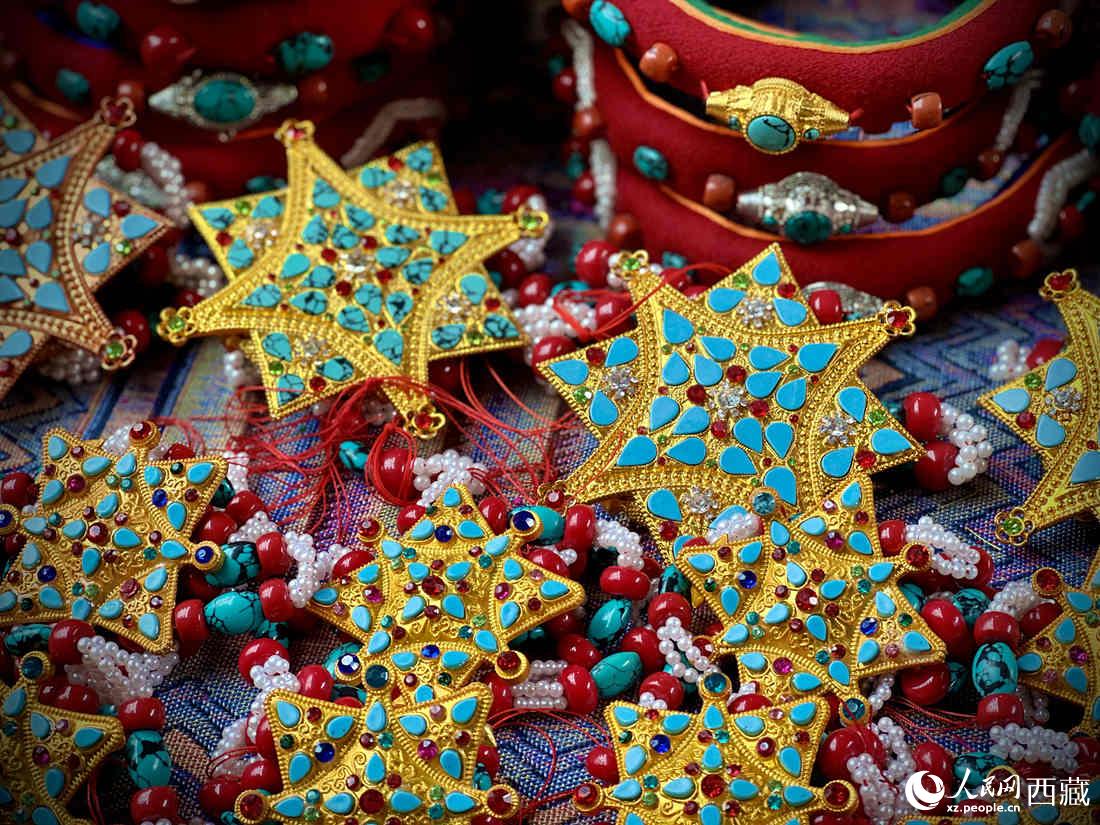
Photo shows ornaments the Tibetan people wear in celebration of festivals and on important occasions. (People’s Daily Online/Tsering Norbu)
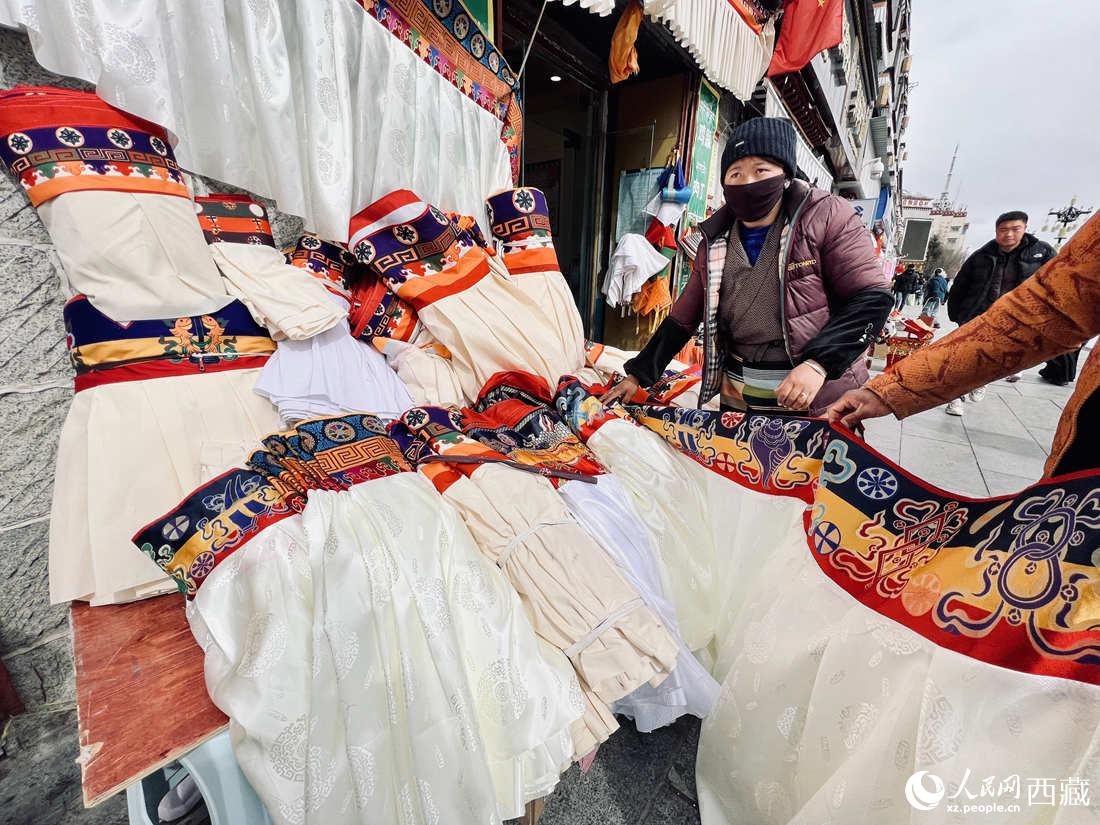
A shop owner measures the length of drapes purchased by a customer at a market in Lhasa, capital of southwest China’s Tibet Autonomous Region. It’s a tradition of the Tibetan people to replace the drapes that hang on or above doorways once a year to signal their best wishes for an auspicious New Year. (People’s Daily Online/Tsering Norbu)

Photo shows Kasai, a fried pastry often prepared for entertaining guests. (People’s Daily Online/Tsering Norbu)
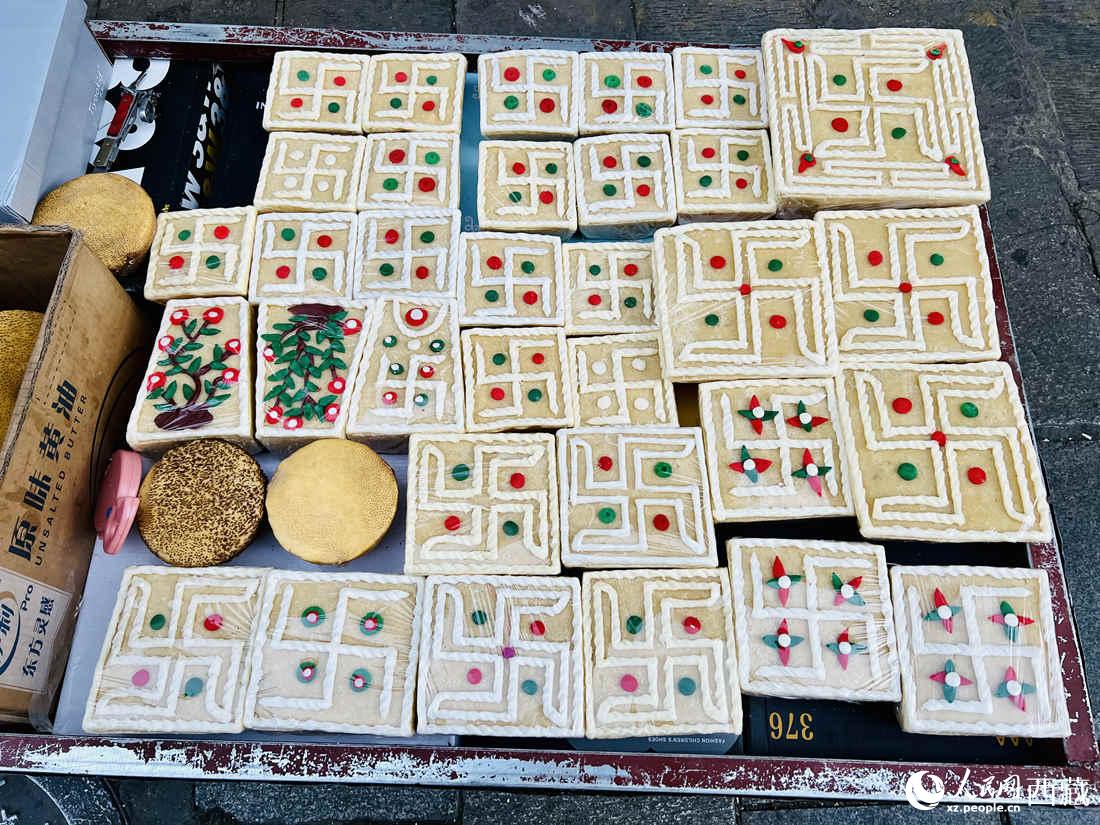
Photo shows Tibetan-style deserts made of butter and cheese. (People’s Daily Online/Tsering Norbu)
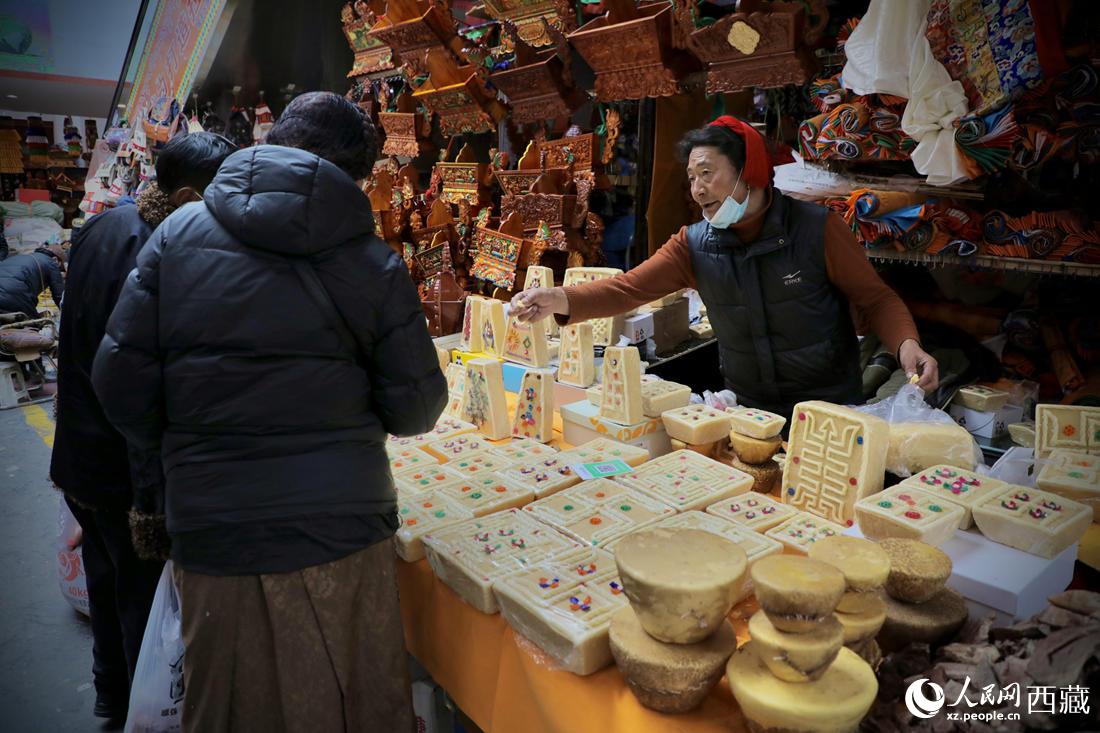
A vendor invites customers to try his products. (People’s Daily Online/Tsering Norbu)
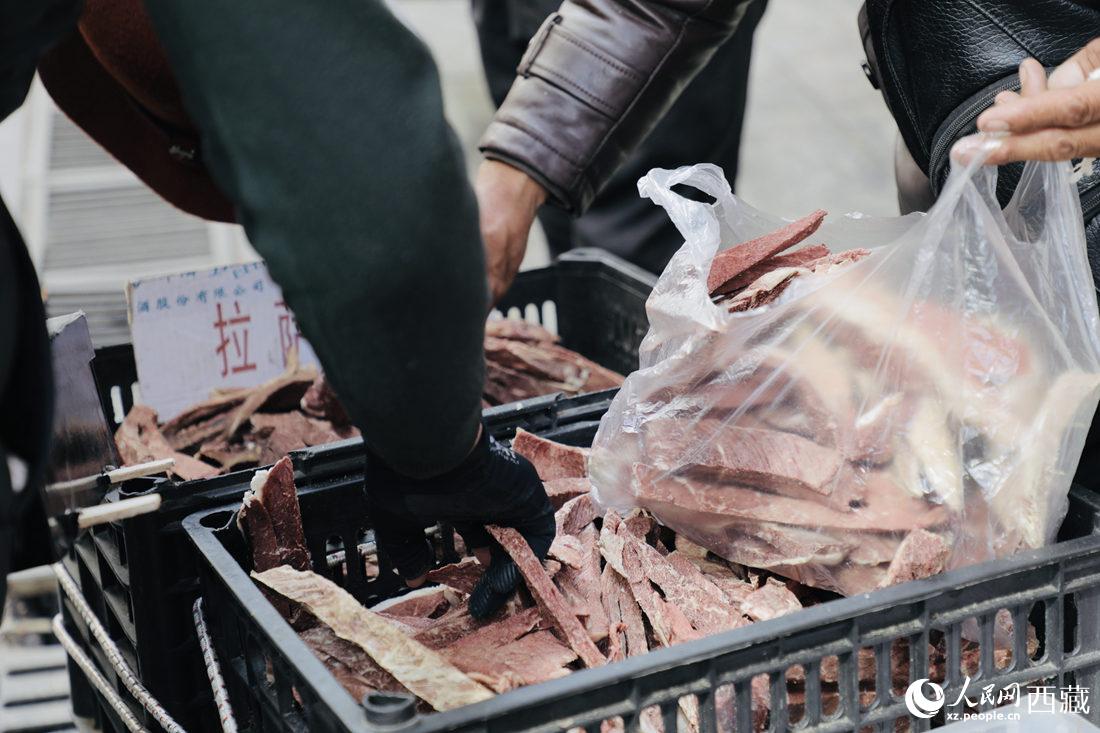
Customers make a selection as they purchase dried yak meat. (People’s Daily Online/Tsering Norbu)
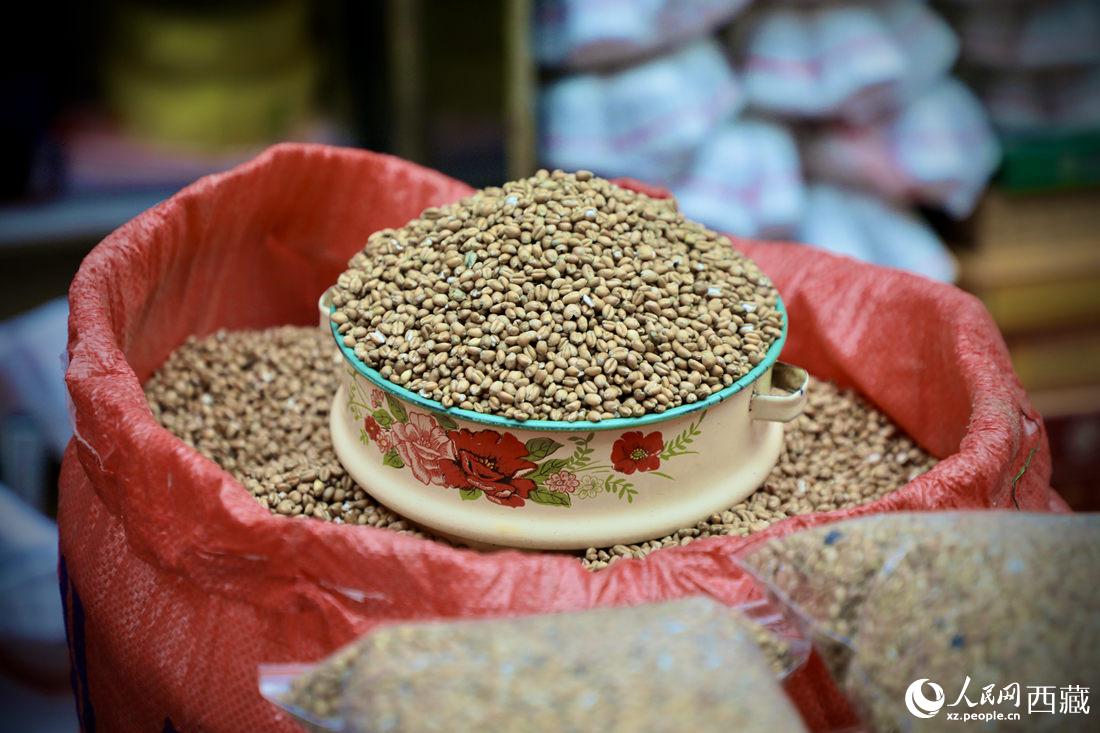
Photo shows highland barley, a must for celebrating the Tibetan New Year. (People’s Daily Online/Tsering Norbu)
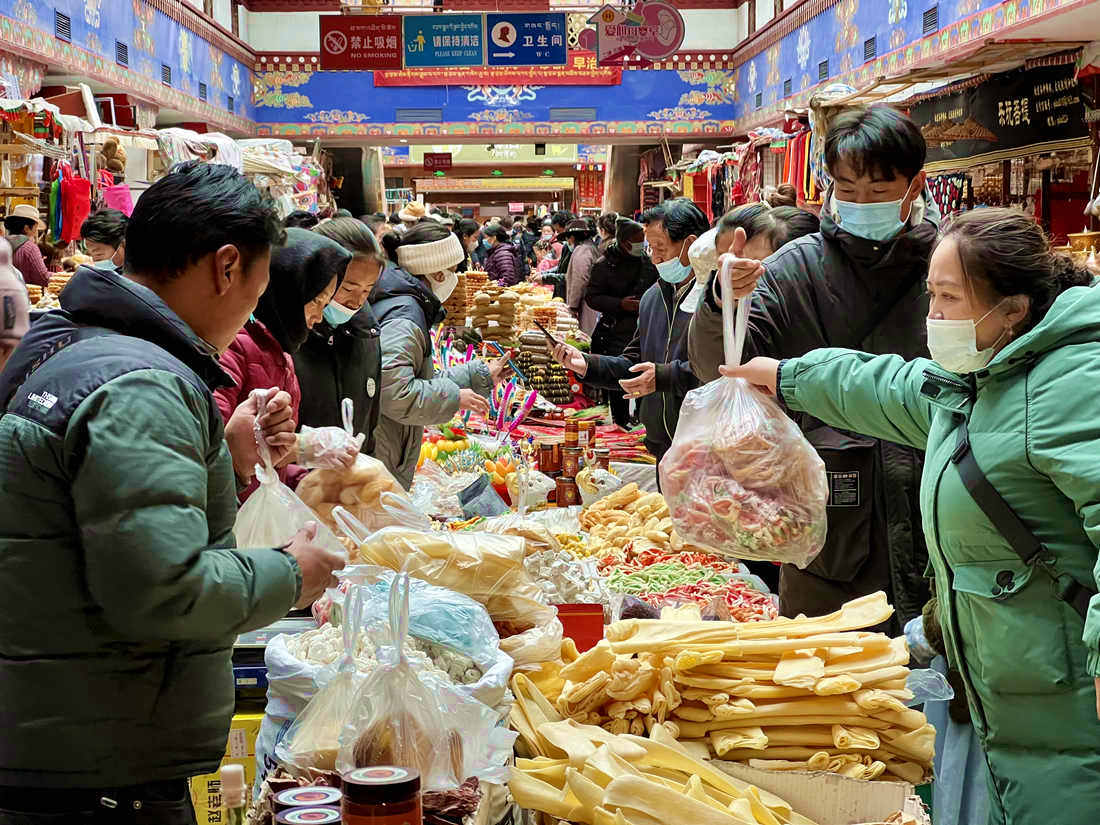
Photo shows a market in Lhasa, capital of southwest China’s Tibet Autonomous Region. (People’s Daily Online/Tsering Norbu)

Photo shows a market in Lhasa, capital of southwest China’s Tibet Autonomous Region. (People’s Daily Online/Tsering Norbu)
Photos
Related Stories
- People celebrate Tibetan New Year
- Colored barley straws for Tibetan New Year
- Traditional food "Kasai" made to greet upcoming Tibetan New Year
- People "hit the horn" to celebrate Tibetan New Year in Lhasa
- Tibetans rejoice at twin New Year celebration
- Tibetans rejoice at twin New Year celebration
- People purchase goods for Tibetan New Year in China's Tibet
- Make butter sculptures to celebrate the Tibetan New Year
- Tibetans wear traditional costumes for Losar
- Tibetan New Year raises heritage protection awareness
Copyright © 2022 People's Daily Online. All Rights Reserved.








